Apple has today rolled out’s new safety service Emergency SOS via satellite features for the iPhone 14 models in selected countries. Just like car crash detection, this is a feature any user would never like to find themselves using but are useful. The innovative technology enables users to message emergency services outside of cellular and Wi-Fi coverage.
Every model in the iPhone 14 lineup — iPhone 14, iPhone 14 Plus, iPhone 14 Pro, and iPhone 14 Pro Max — can connect directly to a satellite through a combination of custom-designed components and deeply integrated software. Emergency SOS via satellite builds on existing features vital to iPhone users, including Emergency SOS, Medical ID, emergency contacts, and Find My location sharing, offering the ability to connect to a satellite for a more 360-degree approach to sharing critical information with emergency services, family, and friends.
How Emergency SOS via Satellite Works
iPhone can quickly and easily call emergency services if a user is in need of help, even if they are unable to dial 911. With Emergency SOS via satellite — introduced with the iPhone 14 lineup — if a user is not able to reach emergency services because no cellular or Wi-Fi coverage is available, an easy-to-use interface appears on iPhone to get the user help utilizing a satellite connection. A short questionnaire appears to help the user answer vital questions with a few simple taps, which are transmitted to dispatchers in the initial message, to ensure they are able to quickly understand a user’s situation and location. Apple worked closely with experts to review standard questions and protocols to identify the most common reasons for calling emergency services.
Following the questionnaire, the intuitive interface guides the user on where to point their iPhone to connect and sends the initial message. This message includes the user’s questionnaire responses; location, including altitude; iPhone battery level; and Medical ID, if enabled. The questionnaire and follow-up messages are relayed directly via satellite to dispatchers that accept text messages or to relay centers staffed by Apple‑trained specialists who can call for help on the user’s behalf. The transcript can also be shared with the user’s emergency contacts to keep them informed.
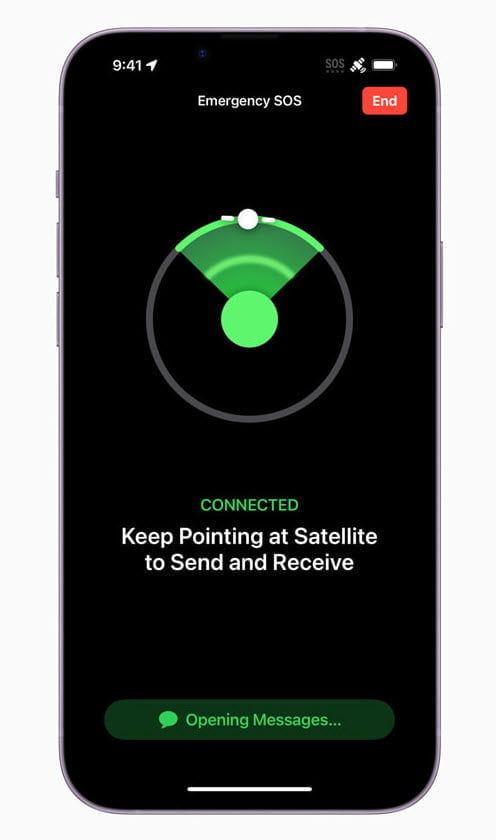
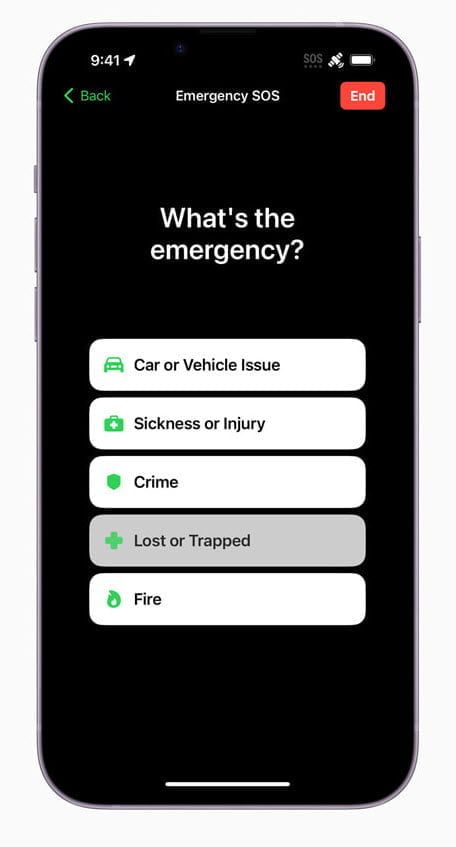
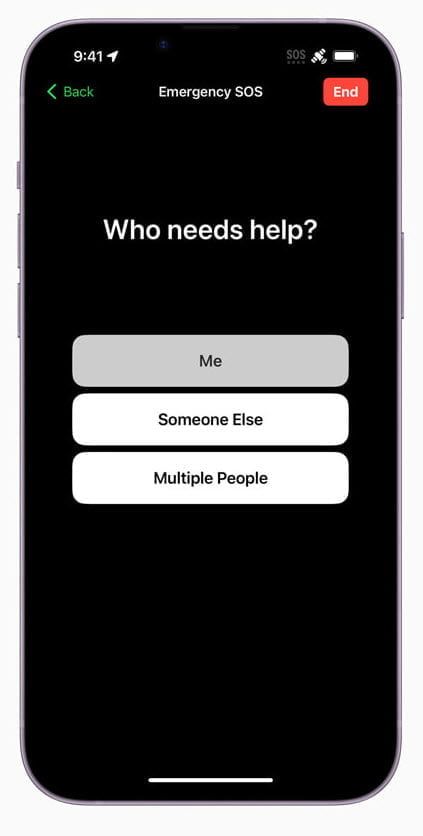
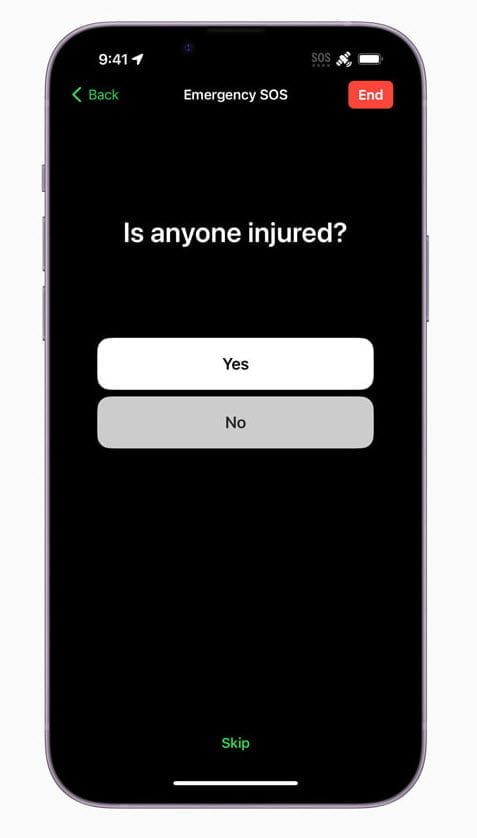
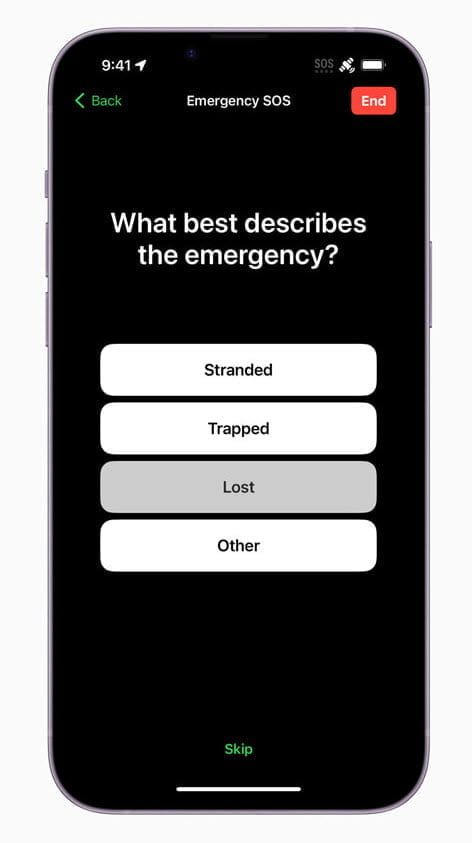
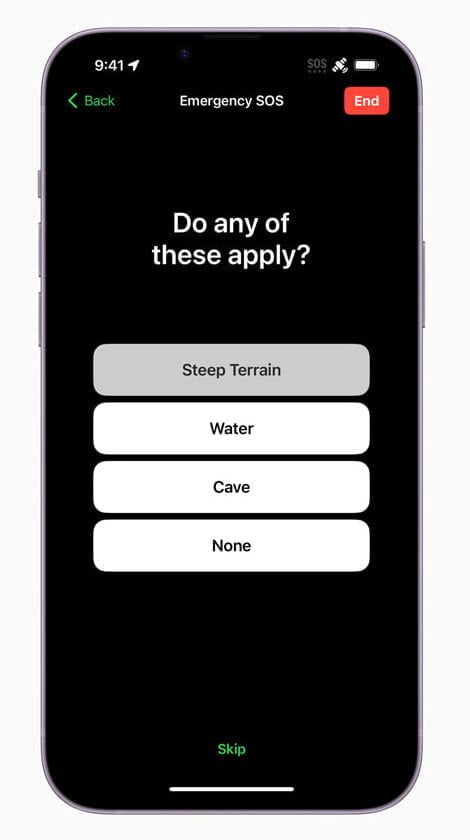
Satellites move rapidly, have low bandwidth, and are located thousands of miles away from Earth, so it can take a few minutes for even short messages to get through. Apple designed and built custom components and software that allow iPhone 14 to connect to a satellite’s unique frequencies without a bulky antenna. A text compression algorithm was also developed to reduce the average size of messages by 300 percent, making the experience as fast as possible. With Emergency SOS via satellite, users can send and receive messages in as little as 15 seconds in clear conditions.
Using the built-in Emergency SOS via satellite demo, users can test satellite connectivity on their iPhone by connecting to a real satellite in range without calling emergency services, allowing them to experience the process and familiarize themselves with the service.
For users who go off the grid but don’t experience an emergency, this advanced technology also enables them to share their location via satellite with Find My. In the Find My app, users can open the Me tab, swipe up to see My Location via Satellite, and tap Send My Location. The satellite connection on the iPhone 14 lineup also works with other safety features available on iPhone and Apple Watch, including Crash Detection and Fall Detection. Emergency SOS via satellite is now available to customers in the US and Canada and no word when it will be rolled out globally.


